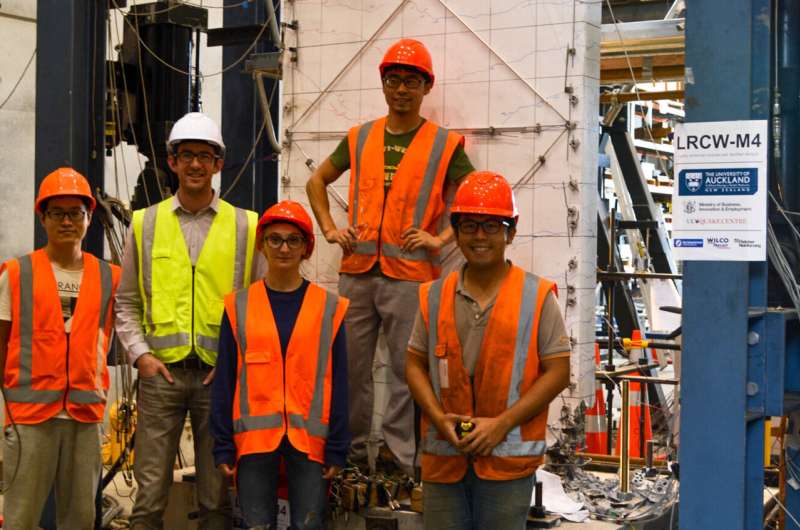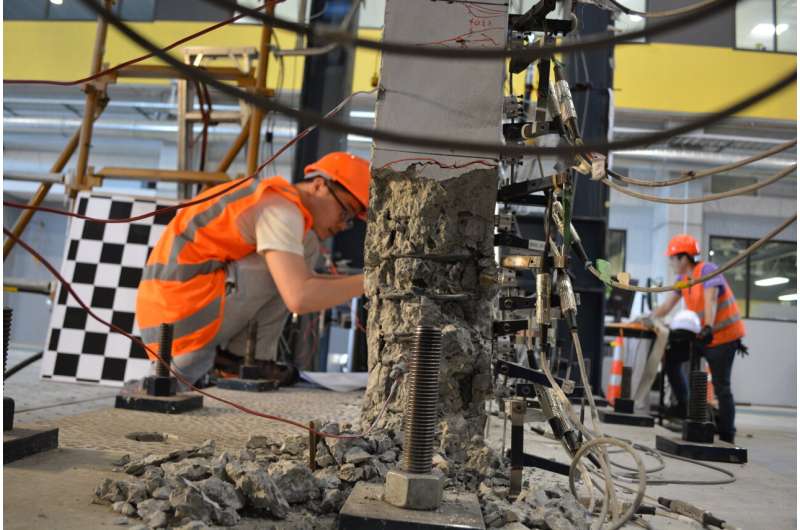Concrete wall seismic test data wins NHERI DesignSafe Dataset Award 2021
An earthquake ripped through the South Island of New Zealand on September 2, 2010, its epicenter narrowly missing the city of Christchurch by about 40 kilometers, or 25 miles. Disaster struck nearly six months later, when an aftershock centered on the city, killing 185 people and injuring many more. The sequence also caused an estimated 40 billion dollars in damage.
In response, the New Zealand government formed the Canterbury Earthquakes Royal Commission to investigate the aftermath and building failures in particular. They developed a list of recommendations for the New Zealand government to act on.
“There was very strong motivation behind actually implementing change,” said professor Rick Henry, a senior lecturer in the Department of Civil and Environmental Engineering at the University of Auckland. “To our advantage as engineers, we had some tangible recommendations we could point to that needed to be addressed.”
These recommendations formed the basis for revisions to the New Zealand Concrete Structures Standard NZS 3101 and subsequently the U.S. Building Code Requirements for Structural Concrete ACI 318.
Henry and colleagues generated first-of-its-kind data on lightly reinforced concrete walls commonly used in multi-story buildings in areas with low or moderate seismicity all over the world. The dataset was published and made publicly available on the Natural Hazards Engineering Research Infrastructure (NHERI) DesignSafe cyberinfrastructure, funded by the U.S. National Science Foundation.
Rick Henry and Yiqiu Lu, a research fellow in Henry’s lab at the University of Auckland, were awarded a DesignSafe Dataset Award 2021, which recognized the dataset’s diverse contributions to natural hazards research.
“In the earthquake engineering space, we see DesignSafe as the most visible platform where publishing that data would allow the most users to find and use it,” Henry said.

The researchers began their investigations by being puzzled over wall damage they saw caused by the Canterbury earthquake. They noticed a lack of distributed cracks at points engineers call ‘plastic hinges,’ such as at the base of the wall, where they expected more bending in response to the ground shaking.
“There was very little cracking in walls that should have sustained large deformations,” Henry explained. “Investigators found that all of the steel reinforcement had fractured or broken. It was hidden damage within the wall that raised a lot of the concerns around, why did we get that?”
Henry and Lu focused on simulating seismic demands on walls in the lab, testing 11 wall components with about 80 sensors to measure their deformations and strains to increasingly applied loads that simulated seismic actions of larger and larger earthquakes.
The high-quality documentation and dataset they generated includes details of the test walls, their material properties, test setup, the instrumentation plan, loading protocol, test sequences, test observations, crack patterns, photos, videos, time-lapse animations, and sensor data.
A paper on the dataset was published in the March 2021 issue of the Journal of Structural Engineering of the American Society of Civil Engineers.
“We looked at how we place limits on wall design to ensure that we get the required performance we need,” Henry said. “There hadn’t been much in the way of testing around what we’d deemed as lightly reinforced walls.”
Much of what Henry’s lab does when they’re trying to understand structural responses is either to test physical components or to develop numerical simulation. He emphasized that they go hand-in-hand.

“Sometimes we see things in earthquakes, and sometimes we see things in the lab,” he said. “They all help us to improve our understanding of it. One really useful outcome of doing physical testing is that we can then use that to calibrate and verify models that might be used for designing buildings.”
He explained that earthquake engineering fits broadly into two categories. One is for existing buildings that might not have been designed up to current standards.
“Can we predict and understand what buildings are going to do during earthquakes,” posited Henry. “In particular, how do we need to intervene or strengthen them to improve their performance?”
Secondly, there is the category of new buildings and the general improvement of the design process.
“Most of what we focus on is applied in that applied end of research. To be able to put what we’ve done into practice and see a change in new design or some engineering practices as a result of our work is the objective of what we’re doing.” Henry said.
Funding for Henry’s work on wall testing came from the New Zealand Ministry of Business, Innovation and Employment (MBIE), and more recently from the New Zealand Center for Earthquake Resilience (QuakeCORE), which is a collaborating organization with DesignSafe.
Yiqiu Lu et al, Data Set for Cyclic Tests of Eleven Lightly Reinforced Concrete Walls, Journal of Structural Engineering (2020). DOI: 10.1061/(ASCE)ST.1943-541X.0002942
Citation:
Concrete wall seismic test data wins NHERI DesignSafe Dataset Award 2021 (2021, June 17)
retrieved 17 June 2021
from https://techxplore.com/news/2021-06-concrete-wall-seismic-nheri-designsafe.html
This document is subject to copyright. Apart from any fair dealing for the purpose of private study or research, no
part may be reproduced without the written permission. The content is provided for information purposes only.
For all the latest Technology News Click Here
For the latest news and updates, follow us on Google News.
